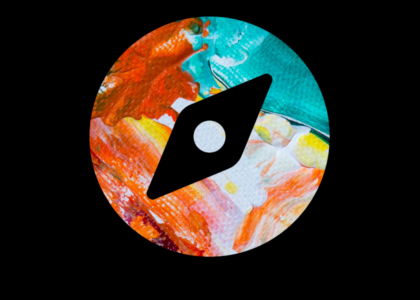Over the course of five notes, we’ve introduced the Q4 theme of Presence as a catalyst for greater attention, curiosity, and flow.
As we finish our exploration, I invite you to reflect on how this practice can support you—both in recognizing precious daily moments, and also in shaping the trajectory for the year ahead.
We’ve collected the key points from each of our Sunday notes below, so can you have them in one place for easy reference.
Make sure to read through to the end for some practical journaling prompts and an invitation for what’s to come.
Presence Recap
Part 1: What is Presence and Why Do I Need It?
Presence is the art of being fully engaged in the moment, aware of your thoughts, emotions, and surroundings—without distraction. It’s about intentional response over reactive behavior, making it a vital skill for navigating a world filled with constant noise.
This type of awareness can be transformative, helping leaders connect with their teams, identify subtle opportunities, and make better decisions.
If you’re new to practicing Presence, begin small: challenge yourself to do a simple task, like responding to a single email, with full attention. Notice distractions as they arise to build the muscle of intentional focus.
Awareness is the foundation of Presence.
It starts with pausing to experience the details of each moment—what you see, hear, and feel—internally and externally.
This practice brings a level of crispness and clarity to our world, rather than letting internal narratives take the lead.
We have seen time and again with leaders that learning to create pauses in our autopilot is an act of self-care.
Cultivating awareness creates a bridge between our physical and mental states, allowing us to navigate daily challenges with greater ease.
While judgment helps us make sense of the world, it can also trap us in negative loops that limit perception and choice.
As awareness deepens, so does your ability to notice judgment—your internal assessments of satisfaction or dissatisfaction.
Shifting from judgment to curiosity opens doors to compassion and creativity.
Instead of thinking, “This is awful” try asking, “What might explain this situation?”
Part 4: Intention > Attachment
Attachment occurs when we tie our happiness or worth to specific outcomes, creating anxiety and rigidity.
Presence teaches us to replace attachment with intention, aligning our goals with a deeper sense of purpose.
We shared a client example where releasing attachment to selling her business allowed a founder to uncover untapped opportunities for growth.
Letting go of an exit number allowed her to discover a product line extension tailored to their existing clients—and has proven to be a massive success for the business.
To set intentions for your goals, ask yourself, “How do I want to be in this process?”
This question grounds your intentions in the present moment, inspiring actions that align with your values—and real customer needs—instead of clinging to attachments.
Part 5: The Neuroscience of Presence and Flow
Neuroscience reveals that being present quiets the brain’s Default Mode Network, which is responsible for rumination and looping thoughts. In its place, regions tied to clarity and focus activate, creating a state of flow where distractions fade and productivity skyrockets.
Flow thrives at the intersection of challenge and skill. Trying new activities can pull you into this state, fostering curiosity, creativity, and growth.
One client rediscovered flow by recognizing that he was bored…and used that as fuel to power new (ad)ventures. 😉
::New Stuff::
Creating an Intentional Practice
Most business owners know how to set tangible goals like revenue targets or expansion plans—you’re probably starting to do that right about now.
While targets are important, they often bypass the lived experience required to achieve them.
Just last week, a business owner opened up to me about what it cost her to reach some very impressive material goals. She experienced massive guilt over the sacrifices she made on the way up—her need to prove success ruled her and took away irreplaceable moments that mattered.
Taking Aligned Action
Imagine approaching 2025 committed to a daily experience rooted in Presence, no matter the circumstances thrown at you.
Consider the exercises below your Presence prep-work, and keep reading to see how we’ll be using these journaling prompts as input for planning 2025.
- List Your Weekly To-Do’s
Start by listing all the things you do in a typical week, both big and small. Include everything—emails, meetings, strategy sessions, as well as personal tasks like meal prep or exercise. - Rate Each One
On a scale of 1 to 10, rate each one based on how satisfying or fulfilling it feels to you.- 1: Least satisfying—drains your energy or feels misaligned.
- 10: Most satisfying—energizes you or aligns with your passions and strengths.
- Identify the Bottom
Look at the items that scored the lowest (1–3). Group them into these buckets: delegate, outsource, eliminate. Take note of any that you think should still remain on your plate. Journal on why you think that is. - Reallocate the Middle
For the mid-range (4–7), ask the question: “What would it take to have this bucket occupy no more than 30% of my weekly time? (E.g., batching similar tasks, automating where possible, or limiting them to specific time blocks). - Prioritize the Top
Finally, focus on the items that scored the highest (8–10). These are your zones of genius and passion—the areas where you thrive and contribute the most value. Journal on ways to spend more time here.
Mark Your Calendar: January 14th at 12pm EST
I want to help you put everything we’ve been learning into practice via a live Zoom prep session. Bring your journaling prompts with you to that meeting.
This will be structured specifically for business leaders looking to kickoff 2025 with intention.
If we have enough interest, we’ll make it happen.
Thanks for learning with me all quarter—it’s been fun. See you in 2025! 😊
